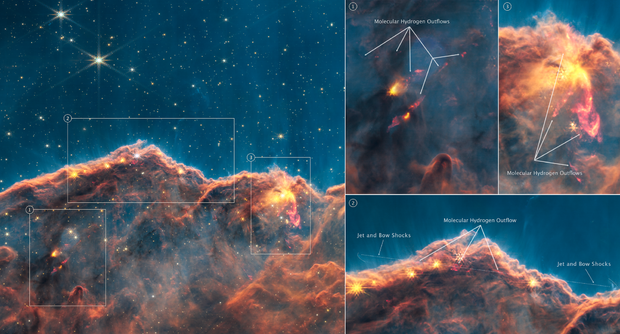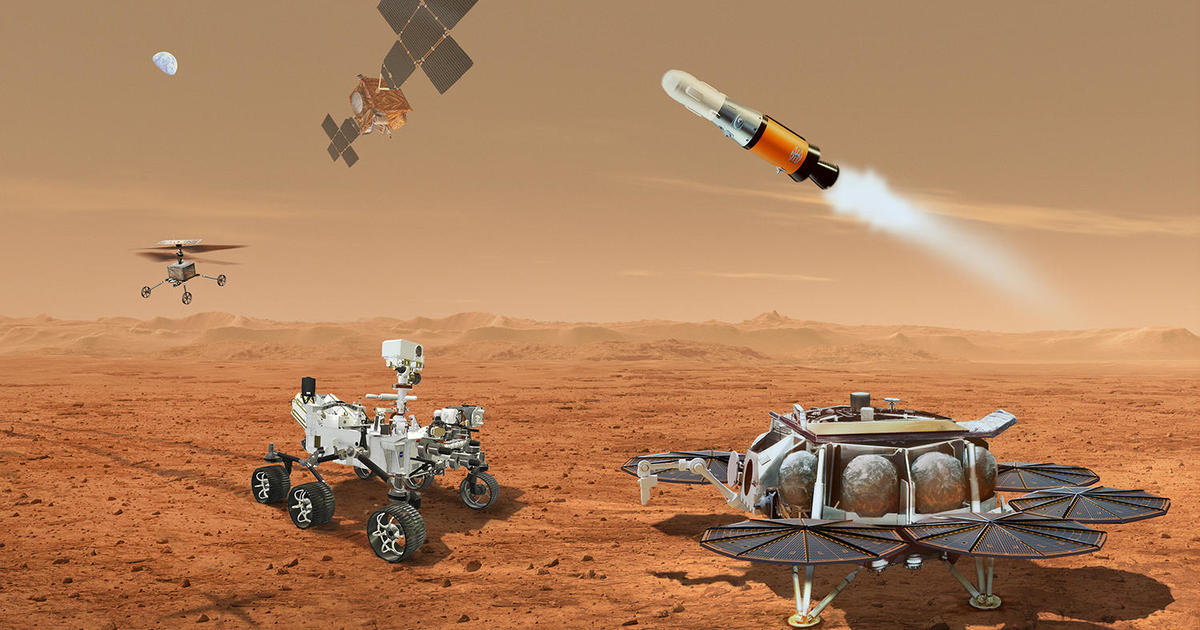NASA captures a "snapshot in time" showing how a star is born among the Cosmic Cliffs
Hidden in the Cosmic Cliffs behind clouds of dust lies a mysterious happening that has intrigued astronomers for years – a "hotbed for star formation." And now, thanks to NASA's James Webb Telescope, you too can see how a star is born.
The Cliffs, which NASA describes as an area of space located "at the edge of a gigantic, gaseous cavity" within the NGC 3324 star cluster, has been studied for years. But it wasn't until the Webb Telescope was able to observe it that astronomers found some of the more immaculate details.
With it, NASA scientists found 24 previously unknown outflows from baby stars, revealing a "gallery of objects ranging from small fountains to burbling behemoths that extend light-years from the forming stars."
And it's a gallery that is difficult to come by.
NASA said that the "very early" formation of every star is a "relatively fleeting event – just a few thousand to 10,000 years amid a multi-million-year process of star formation."
But Webb was able to capture a "snapshot in time," astronomer and leader of the study Megan Reiter said, "to see just how much star formation is going on in what may be a more typical corner of the universe that we haven't been able to see before."
A study on the findings was published in the Monthly Notices of the Royal Astronomical Society this month.
Jets and outflows are essentially star excretions of space gas and dust left over during star formation. They can be seen by the presence of molecular hydrogen, an essential ingredient in the formation process. Previously, Hubble was only able to see these ejections of more evolved objects that were in the telescope's visual wavelengths, but Webb has an "unparalleled sensitivity," allowing scientists to witness younger star stages and get "an unprecedented view into environments that resemble the birthplace of our solar system."
"Jets like these are signposts for the most exciting part of the star formation process," study co-author Nathan Smith said. "We only see them during a brief window of time when the protostar is actively accreting."
For team member Jon Morse, "it's like finding buried treasure."
"In the image first released in July, you see hints of this activity, but these jets are only visible when you embark on that deep dive – dissecting data from each of the different filters and analyzing each area alone," he said.
Many of the stars observed in this study are expected to become low mass stars like our galaxy's sun. And according to Reiter, astronomers will now have a better idea of where in space they can observe just how "sun-like stars" come to fruition.
"It opens the door for what's going to be possible in terms of looking at these populations of newborn stars in fairly typical environments of the universe that have been invisible up until the James Webb Space Telescope," Reiter said.





